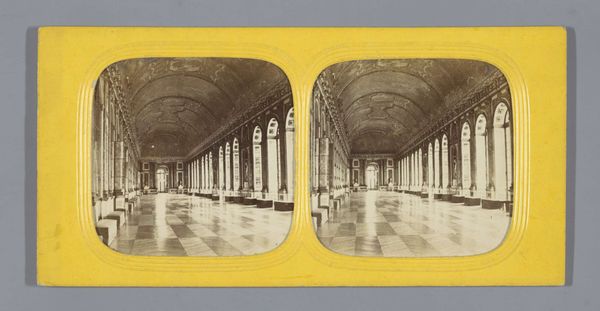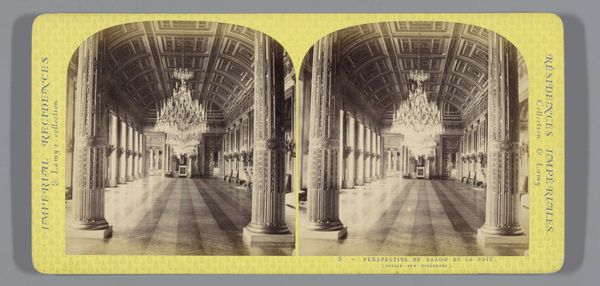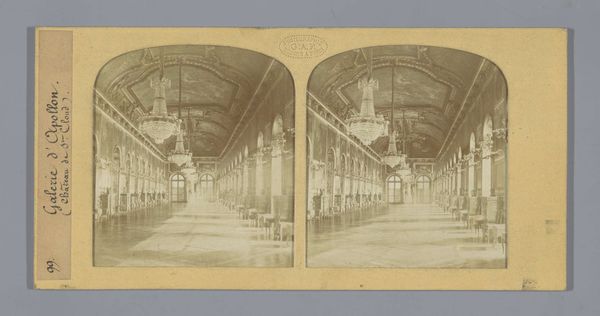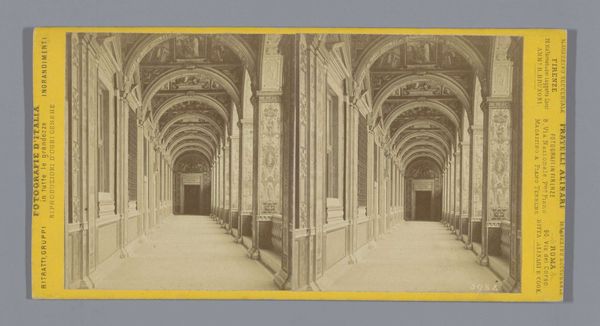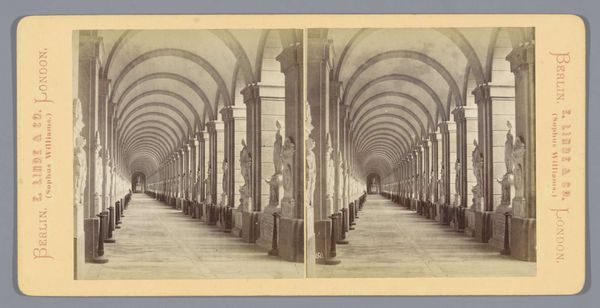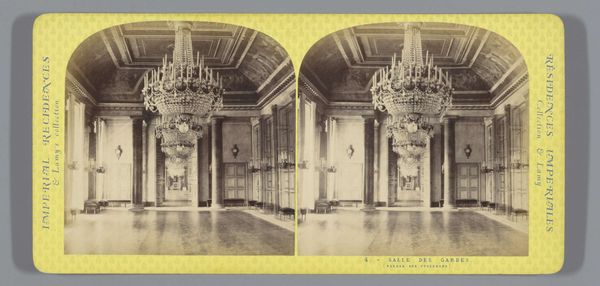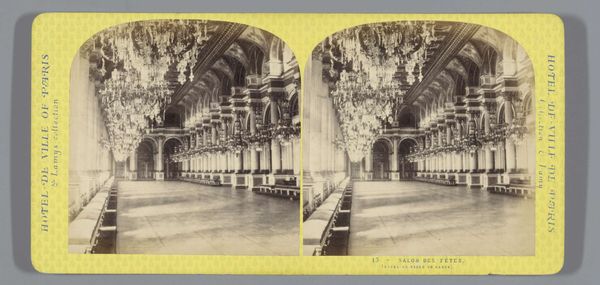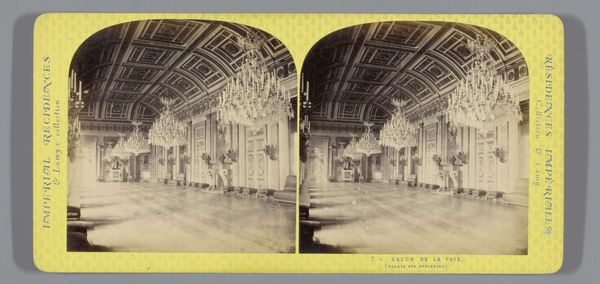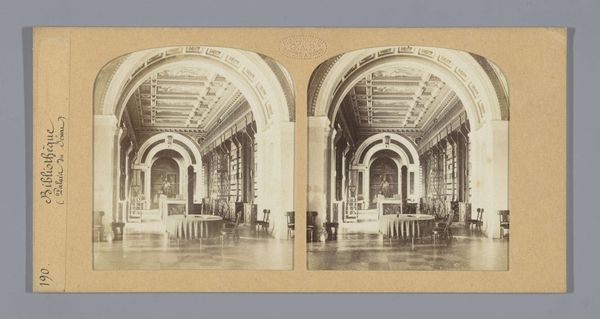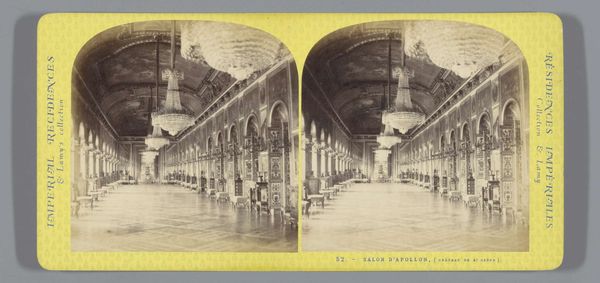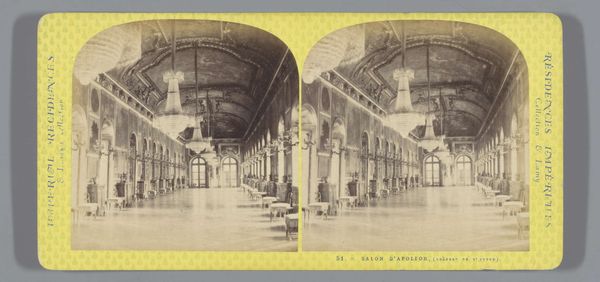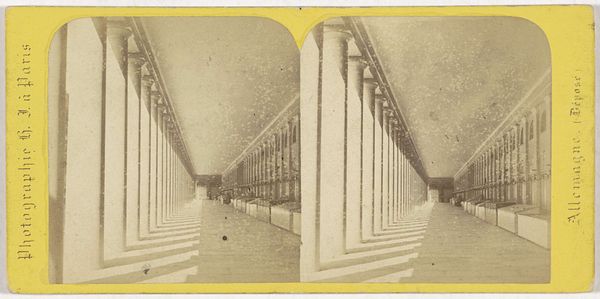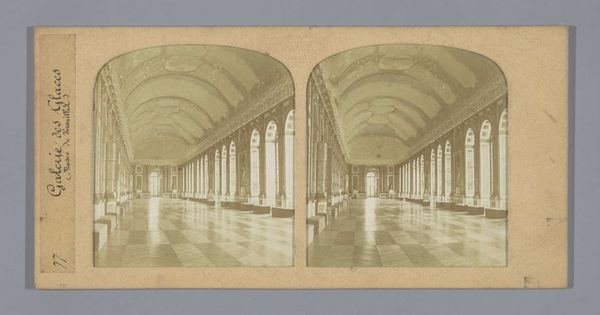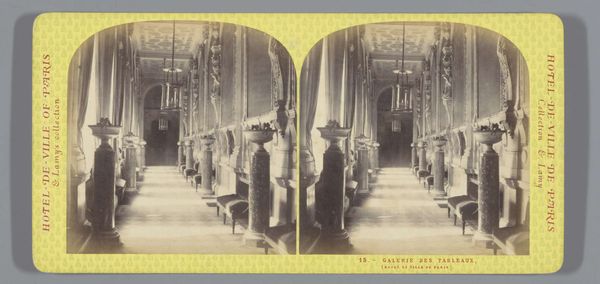
print, photography, site-specific, gelatin-silver-print
# print
#
landscape
#
photography
#
site-specific
#
gelatin-silver-print
#
history-painting
#
realism
Dimensions: height 85 mm, width 170 mm
Copyright: Rijks Museum: Open Domain
Editor: This is a gelatin-silver print from around 1860-1880 titled "Spiegelzaal in het paleis van Versailles," presumably by Ernest Eléonor Pierre Lamy. It shows the Hall of Mirrors. The scene feels almost theatrical. What’s striking is how this very modern medium captures a space so deeply tied to history and power. What historical perspectives inform your interpretation of this image? Curator: That’s a great observation. The photograph, as a relatively new medium at the time, really shifts our understanding of Versailles. Prior to photography, access to images of Versailles, a key symbol of French power, was carefully controlled through paintings, engravings, and other elite media. This print democratizes the image of Versailles, making it available to a broader public. It also documents a very specific moment in the Palace's long history. Editor: Democratization through photography – that’s interesting. In what ways might this image reflect or shape public perceptions of the French monarchy, given its distribution? Curator: Well, the photograph coincided with a period of massive socio-political changes in France. While this photograph itself might seem apolitical, it enters a visual culture grappling with shifting political landscapes. Photographs like this circulated as souvenirs, feeding a burgeoning tourist industry and nostalgia for a glamorous past. But it also subtly challenges the grandeur; the black and white flattens the space, subtly demystifying what was once the very emblem of absolute power. Do you think its reproducibility contributes to that demystification? Editor: Absolutely. Seeing the Hall of Mirrors in such a widely distributable form does bring it down to earth somewhat. The photograph makes the inaccessible accessible, turning a symbol of power into something more akin to a postcard. I never considered the impact of reproduction that way. Curator: Precisely. And that’s how examining art through its historical and social context can truly deepen our understanding. It’s not just about what’s depicted, but about the journey the image takes through society and its effect.
Comments
No comments
Be the first to comment and join the conversation on the ultimate creative platform.
